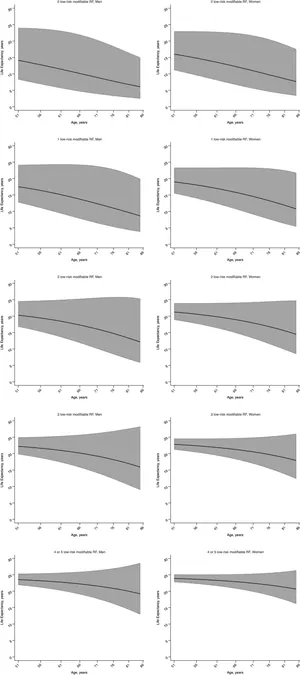
Breakthrough Study Reveals How Lifestyle Factors Can Extend Life Expectancy Without Major Illnesses for Type 2 Diabetes Patients in New Zealand
2024-11-11
Author: Wei Ling
The Setting: A Comprehensive Data Landscape
The DCSS was established in 1991 as part of a primary care audit program to monitor diabetes management practices. Operating from Auckland and seamlessly integrated with national health databases, the research captured a wealth of information on socioeconomic status, pharmaceutical treatments, cancer registries, and hospital admissions. Data included critical clinical metrics like blood pressure, glycaemic control (HbA1c), and lipid profiles, offering an extensive backdrop to analyze health trends in T2D patients.
Study Population: An In-Depth Look
This study focused on participants aged 18 and older with T2D, analyzing various lifestyle risk factors such as blood pressure, cholesterol levels, smoking habits, and kidney function at the point of enrollment. Participants were grouped based on the number of ideal health metrics met at baseline (termed "within-target risk factors" or WTRF+), ranging from zero to five. Remarkably, around 60% of individuals presented with obesity, prompting the researchers to avoid incorporating non-obesity as a healthy threshold due to its prevalence.
Outcomes: Connections between Health and Longevity
The outcomes evaluated included mortality rates and the incidence of cardiovascular disease (CVD), cancer, and dementia—as these chronic conditions significantly affect quality of life for T2D patients. The findings showed that those with more WTRF+ exhibited extended healthy life expectancy (HLE) free from CVD, cancer, and dementia. For instance, women aged 50 years with no WTRF+ had an HLE of approximately 13.1 years, while those with three WTRF+ enjoyed an extended HLE of about 21.1 years—indicating a staggering difference of 8 years! Similarly, men with no WTRF+ had an HLE of 11.2 years, which increased to an inspiring 20.1 years with three WTRF+ at enrollment.
Dramatic Differences Across Ethnicities and Socioeconomic Status
The research highlighted significant disparities among different ethnic groups in New Zealand. Notably, New Zealand Europeans had a greater average number of WTRF+ compared to the Māori and Pasifika populations, revealing a pressing need for tailored interventions in underserved communities. The results demonstrated that socioeconomic status profoundly influenced HLE—individuals from deprived backgrounds had a healthier life expectancy that was drastically shorter.
Statistical Insights: The Power of Multifaceted Analysis
Advanced statistical techniques, including Cox proportional hazards analyses, were employed to unravel the complex relationships between WTRF+ and health outcomes. This level of detail underscores the intrinsic value of comprehensive health data in tracking disease incidence and mortality rates effectively.
Exciting Future Directions
Beyond validating the benefits of lifestyle changes on longevity, these findings pave the way for future research to delve deeper into granular lifestyle factors, such as diet and exercise, that could offer even more significant health benefits for T2D populations. The implications of this study are far-reaching, suggesting that proactive management of health risk factors can drastically improve quality of life and extend life expectancy not just for T2D patients but also for the broader community.
Conclusion: A Call to Action
As the global landscape shifts towards recognizing the importance of lifestyle interventions, this study serves as a clarion call for healthcare providers to prioritize comprehensive lifestyle counseling. It emphasizes the necessity of personalized care strategies that address the unique needs of diverse ethnicities and socio-economic groups to uplift and extend healthy living for everyone grappling with the challenges of type 2 diabetes. The research asserts a powerful narrative: by actively managing health metrics, individuals can not only thrive but also enjoy longer, healthier lives devoid of major chronic diseases.



 Brasil (PT)
Brasil (PT)
 Canada (EN)
Canada (EN)
 Chile (ES)
Chile (ES)
 Česko (CS)
Česko (CS)
 대한민국 (KO)
대한민국 (KO)
 España (ES)
España (ES)
 France (FR)
France (FR)
 Hong Kong (EN)
Hong Kong (EN)
 Italia (IT)
Italia (IT)
 日本 (JA)
日本 (JA)
 Magyarország (HU)
Magyarország (HU)
 Norge (NO)
Norge (NO)
 Polska (PL)
Polska (PL)
 Schweiz (DE)
Schweiz (DE)
 Singapore (EN)
Singapore (EN)
 Sverige (SV)
Sverige (SV)
 Suomi (FI)
Suomi (FI)
 Türkiye (TR)
Türkiye (TR)
 الإمارات العربية المتحدة (AR)
الإمارات العربية المتحدة (AR)